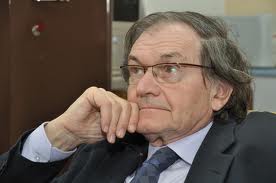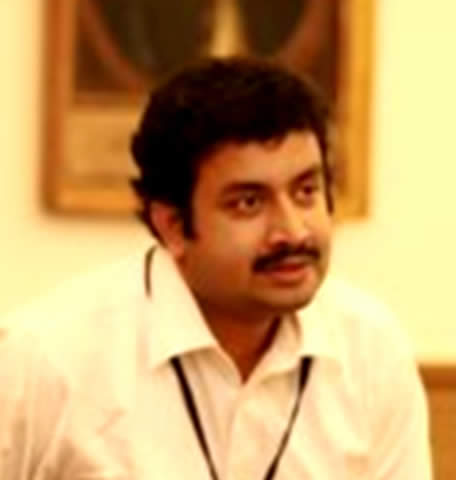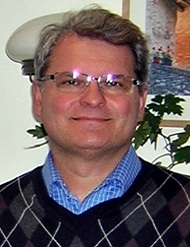|
TOWARD A SCIENCE OF CONSCIOUSNESS The Tucson Conference 2014 - 20th Anniversary / APRIl 21-26, 2014 Tucson - University Park Marriott under the direction of the Center for CONSCIOUSNESS STUDIES, University of Arizona Pre-Conference Workshop ONLINE REGISTRATION
Microtubules and Quantum Biology
Presenters: Roger Penrose, Stuart Hameroff, Anirban Bandyopadhyay, Jack Tuszynski, Travis Craddock
Date: Monday morning, April 21, 2014 Session: 9:00 am - 1:00 pm Room: tba Roger Penrose Stuart Hameroff Anirban Bandyopadhyay Jack Tuszynski Travis Craddock Mainstream views assume consciousness emerges from complex synaptic computation among brain neurons, each acting as a fundamental information unit. However such views fail to 1) generate testable predictions, 2) provide supportive evidence, or 3) distinguish conscious from non-conscious processes. Moreover, single cell organisms perform cognitive activities without synaptic connections, utilizing cytoskeletal microtubules which regulate neuronal synapses, and organize neuronal activities. Cylindrical polymers of the protein tubulin (the brain’s most prevalent protein), microtubules are proposed to process information, encode memory, and serve as quantum computers underlying consciousness in the Penrose-Hameroff model of ‘orchestrated objective reduction (‘Orch OR’). The idea of quantum computing in the ‘warm, wet and noisy’ brain has been viewed skeptically, but evidence in recent years supports warm, biological quantum coherence in photosynthesis, DNA and microtubules. This workshop will review and update the relevant biology, biophysics and pharmacology of microtubules. Speakers will cover the following topics: Research Discovery of quantum vibrations in 'microtubules' corroborates ... Phys.Org A review and update of a controversial 20-year-old theory of consciousness published in Physics of Life Reviews claims that consciousness derives ............ http://phys.org/news/2014-01-discovery-quantum-vibrations-microtubules-corroborates.html
Roger Penrose, Prof. Sir, Mathematical Institute, University of Oxford, UK,
Stuart Hameroff MD, Departments of Anesthesiology and Psychology, Center for Consciousness Studies, The University of Arizona, Tucson, Arizona Current status and update of the Penrose-Hameroff ‘Orch OR’ theory of consciousness, EEG rhythms as ‘beat frequencies’ of microtubule megahertz vibrations, anesthetic and psychoactive drug effects on microtubules, ultrasound (megahertz vibrational) effects on neuronal development, transcranial ultrasound (TUS) effects on mood and mental states
Anirban Bandyopadhyay PhD, National Institute for Materials Science, Tsukuba, Japan, Visiting Professor, MIT Nanotech stimulation and recording of multiple electron conductances (kilohertz, megahertz and gigahertz resonances) from single microtubules at ambient temperature, fractal frequencies, non-local coupling, axonal microtubule bundle dynamics and action potentials
Jack Tuszynski PhD, Departments of Physics and Experimental Oncology, University of Alberta and Cross Cancer Institute, Edmonton, Alberta, Canada Overview of microtubules, models of microtubule information processing, tubulin C termini dynamics, ion conductance along and through microtubules, exciton hopping, microtubule pharmacology and cancer.
Travis Craddock PhD, Center for Psychological Studies, Nova Southeastern University, Fort Lauderdale, Florida Memory encoding in microtubules (CaMKII phosphorylation), microtubules and Alzheimers disease, conduction pathways (‘quantum channels’), tryptophan excitations, anesthetic binding.
References Craddock T, St George M, Freedman H, Barakat K, Damaraju S, Hameroff S. Computational predictions of volatile anesthetic interactions with the microtubule cytoskeleton: implications for side effects of general anesthesia. PLoS ONE 2012;7(6):e37251.http://dx.doi.org/10.1371/journal.pone.0037251. Craddock T, Tuszynski J, Chopra D, Casey N, Goldstein L, Hameroff S. (2012) The zinc dyshomeostasis hypothesis of Alzheimer’s disease. PLoS ONE 7(3):e33552.http://dx.doi.org/10.1371/journal.pone.0033552. Craddock T, Tuszynski J, Hameroff S. (2012) Cytoskeletal signaling: is memory encoded in microtubule lattices by CaMKII phosphorylation? PLoS Comput Biol 8(3):e1002421.http://dx.doi.org/10.1371/journal.pcbi.1002421. Hameroff S (1998) Quantum computation in brain microtubules? ThePenrose–Hameroff “Orch OR” model of consciousness. Philos Trans R Soc Lond Ser A. 356:1869–96. Hameroff S, Nip A, Porter M, Tuszynski J (2002) Conduction pathways in microtubules, biological quantum computation and microtubules. Biosystems 64(13):149–68. Hameroff S, Penrose R (2013) Consciousness in the universe” A Review of the Orch OR model (2013) Physics of Life Reviews Hameroff S, Trakas M, Duffield C, Annabi E, Gerace MB, Boyle P, et al (2013). Transcranial Ultrasound (TUS) effects on mental states: a pilot study. Brain Stimul 2013;3(6):409–15. Hameroff S. (2012) How quantum brain biology can rescue conscious free will. Front Integr Neurosci 6(93):1–17.http://dx.doi.org/10.3389/fnint.2012.00093. Hameroff SR, Penrose R. (1996) Conscious events as orchestrated space–time selections. J Conscious Stud 3(1):36–53. Hameroff SR, Watt RC (1982) Information processing in microtubules. J Theor Biol 98:549–61. Sahu S, Ghosh S, Ghosh B, Aswani K, Hirata K, Fujita D, Bandyopadhyay A (2013) Atomic water channel controlling remarkable properties of a single brain microtubule: correlating single protein to its supramolecular assembly. Biosens Bioelectron 2013;47:141–8. Sahu S, Ghosh S, Hirata K, Fujita D, Bandyopadhyay A. (2013) Multi-level memory-switching properties of a single brain microtubule. Appl Phys Lett 2013;102:123701. Tuszynski J, Editor (2006). The emerging physics of consciousness. Heidelberg (Germany): Springer Tuszynski J, Hameroff S, Sataric M, Trpisova B, Nip M (1995) Ferroelectric behavior in microtubule dipole lattices; implications for information processing, signaling and assembly/disassembly. J Theor Biol 174:371–80. |
|
|||||||||||||




